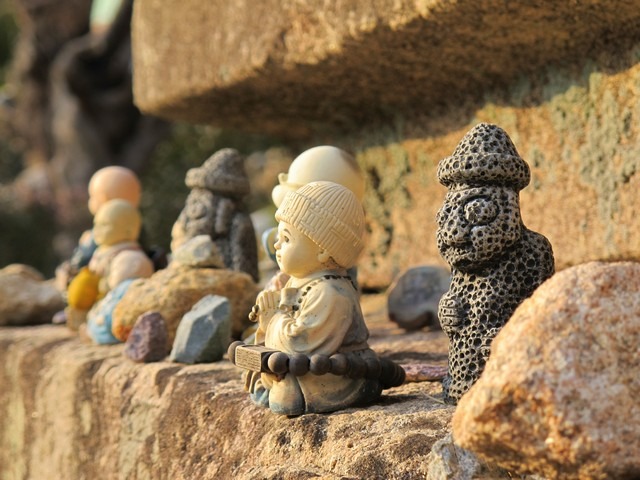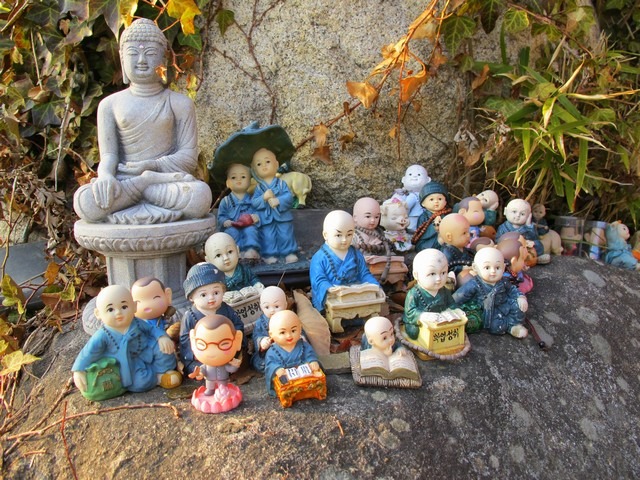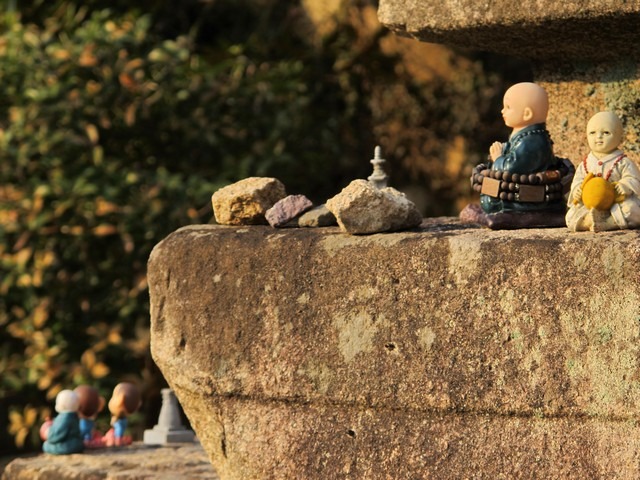Eunhasa Temple in Gimhae, South Korea
Last Updated on December 19, 2024
If you’re in Gimhae, Korea and looking for a beautiful quaint temple to visit, look no further than Eunhasa Temple. Enjoy a walk in the woods, hike up a mountain if you want, or take a drive up and come upon this beautiful Buddhist temple.
Eunhasa Temple isn’t huge, but when I go hiking in Korea, I tend to enjoy having temples to stop off at or as a goal for the walk. There’s always a beautiful one to sit and enjoy on every mountain in Korea.

(This post contains affiliate links, which means I receive a certain percentage of a sale if you purchase after clicking at no cost to you. Thank you for your support.)
How To Get There
Address: 882 Sambang-dong Gimhae-si Gyeongsangnam-do (경상남도 김해시 삼방동 882)
What To See
After we had finished the traditional bowing ceremony this Lunar New Year holiday, eaten up all of the lovely rice cake soup my mother-in-law had prepared and taken the necessary after meal nap, we hopped in the car to visit a nearby Buddhist temple.
My mother-in-law is Buddhist and when time permits has her husband drive her to a temple to pray. I love visiting a beautiful temple and so this year instead of just the in-laws going, Jae-oo and I tagged along.

When they first moved out of Busan and into Gimhae, a suburb of the larger city, I wasn’t that excited. It just meant we’d be further from our friends in Busan when we went to visit and would have to borrow my father-in-law’s car, and this meant that I would have to drive because even though Jae-oo has a license, he hasn’t driven in fifteen years, so I certainly wouldn’t trust him behind the wheel.
Since they’ve moved there though, it has allowed me to learn more about the area and see more than I would have found otherwise, as Gimhae doesn’t really make it into most must see places in tourist books.

Historically however, the city is rather relevant. It was the ruling city of the Gaya Kingdom during Korea’s Three Kingdoms Period, which was made of nine villages united by King Suro, whose tomb we visited on our last visit to the area. Not only is it historically important but it has some breathtakingly beautiful natural areas to explore as well, which is what I found out on this trip.

The temple that was chosen for us to visit on this venture out was Eunhasa, which is located on Sineosan Mountain, or Fish of the Gods Mountain, in English. My in-laws are older and don’t go hiking, so we enjoyed the paved road path up to the temple by car, but from what I saw, this would be a wonderful mountain area to enjoy a hike in.

Eunhasa temple (은하사) was originally built during the reign of King Suro, but unfortunately, as so many temples in Korea, was burnt down during the 1592 Japanese invasion. It was rebuilt in 1629 and renovated in 1649, 1801 and most recently in 2003. The temple was founded by Jangyuhwasang, a monk from Garakgung, and was originally named Seorimsa.
To enter you first drive under a large traditional gate, to let you know you’re near. After parking the car and climbing up some large uneven stone stairs there is a beautiful fish carved bridge spanning a small pond with the statue of Gwanseeum-bosal, the Goddess of Compassion and Healing, floating in the water. It seems from photos I’ve found online the white bridge over the pond is a newer addition to the scenery and may have been added during the renovations in 2003.

After enjoying the serenity of the pond and catching your breath, there is a second flight of large uneven stone stairs up to a red and green gate with three large doors. This opens up onto a lower courtyard and another parking lot, for those people that don’t want to walk up so many steps. From here the temple really begins to show itself off proudly with the beautiful rocky mountain tops of the Sineosan Mountains for a backdrop.
The first building to stand out is the large bell pavilion immediately to the left with dragon heads adorning its every side. The gong is also an intricately carved dragon’s head hanging from the inside of the pavilion which stands on legs made from tree trunks. Walking up yet another flight up steps next to the bell pavilion brings us to another courtyard.

On the left side of the courtyard sits Myeongbu-jeon Hall which houses a statue of Jijang-bosal, or the God of the Afterlife. The lattice flowers that adorn the doors of this hall are stunning and very colorful. Centrally located on the courtyard is Daeung-jeon Hall, the main hall on the complex and Tangible Cultural Property #238. It’s not as large as some main halls, but the pictures on the inside and the outside are worth a gander.

While my mother-in-law went to each hall and prayed, we walked around the complex for some time enjoying the calmness and noting all of the small statues scattered around on ledges here and there that I think were brought by worshippers for the New Year of the Snake.
A pagoda stands proudly on the right side of the courtyard and Jae-oo and I made a small pile of rocks of our own at the base of it before leaving, though I hope to come back again in the future. The area seems to be dotted with temples from what we could see and it could take some time to explore them all, but I welcome the opportunity of the new area.


Did you like this post? Pin iT!


